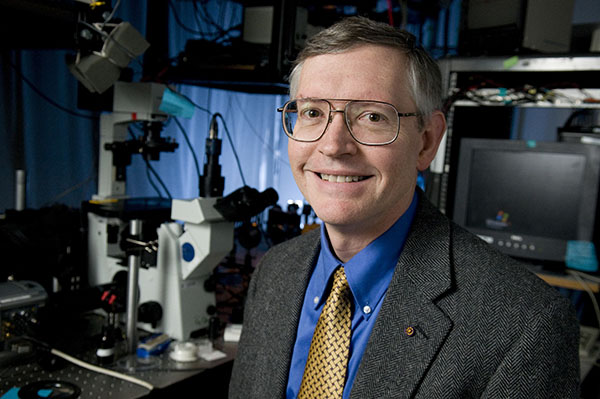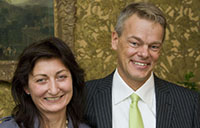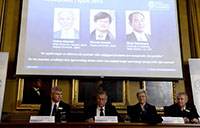Three win Nobel for super-zoom microscopes
(Agencies) Updated: 2014-10-08 18:35
 |
|
Nobel Chemistry Prize winner William Moerner is seen in an undated handout photo provided by Stanford University in California on October 8, 2014. American scientists Eric Betzig and Moerner and Germany's Stefan Hell won the 2014 Nobel Prize for Chemistry on Wednesday for smashing the size barrier in optical microscopes, allowing researchers to see individual molecules inside living cells. [Photo/Agencies] |
 |
| Nobel discovery opens window onto Alzheimer's disease |
 |
| Three scientists share 2014 Nobel Prize in Physics |
"Before, maybe, we could just see the contours of bacteria. But now we can look inside the bacteria and we can see things as small as individual molecules," said Nobel committee member Claes Gustafsson.
"This technique means that suddenly we can start studying details that we could only dream of before. This is really a revolution, because as recently as 15 years ago, it was believed to be theoretically impossible to break this barrier," he said.
Last year's chemistry prize went to three US-based scientists who developed powerful computer models that researchers use to understand complex chemical interactions and create new drugs.
This year's Nobel announcements started Monday with US-British scientist John O'Keefe splitting the medicine award with Norwegian couple May-Britt Moser and Edvard Moser for breakthroughs in brain cell research that could pave the way for a better understanding of diseases like Alzheimer's.
On Tuesday, Isamu Akasaki and Hiroshi Amano of Japan and US scientist Shuji Nakamura won physics award for the invention of blue light-emitting diodes _ a breakthrough that spurred the development of LED technology that can be used to light up homes and offices and the screens of mobile phones, computers and TVs.
The Nobel Prize in literature will be announced Thursday, followed by the Nobel Peace Prize on Friday and the economics prize on Monday.
The prizes are always handed out in ceremonies on Dec. 10, the date that prize founder Alfred Nobel died in 1896.
- Govt encourages people to work 4.5 days a week
- Action to be taken as HIV cases among students rise
- Debate grows over reproductive rights
- Country's first bishop ordained in 3 years
- China builds Tibetan Buddhism academy in Chengdu
- Authorities require reporting of HIV infections at schools
- Typhoon Soudelor kills 14 in East China
- Police crack down on overseas gambling site
- Debate over death penalty for child traffickers goes on
- Beijing to tighten mail security for war anniversary







